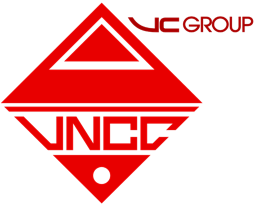

After the 1968 Tet Offensive, the US urgently prepared an air-raid bombing campaign. Under the guidance of the Ministry of Construction, the whole sector ensured production, participate in fighting and the force protection simultaneously.
The Institute directed evacuated officials to instructing local authorities and people construction and design skill. On the other hand, a number excellent architectures and engineers, led by Secretary of Party Committee – Deputy Director Vo Quang Ba to design construction works in the liberated area and the offices of the Provisional Revolutionary Government of the Republic of South Vietnam.
In September 1969, President Ho Chi Minh passed away, leaving indefinite grief to the Vietnamese and our friends around the world. The Institute was entrusted with the secret task of protect His body and preparation of designing, collaborating with the Soviet Union experts to design President Ho Chi Minh Mausoleum. In 1970, the Institute established the Ho Chi Minh Mausoleum design team.
Photo: The design team was preparing the model of President Ho Chi Minh Mausoleum
The Mausoleum construction was officially begun on Sep 2nd 1973. It was the crystallization of the creative work of key personnel of the Institute and the support of the Soviet Union experts. Nowadays, Ho Chi Minh Mausoleum is the most crucial political, historical and cultural work of the capital city and the whole country.
After Paris Agreement in 1973, the country began restoring the damage of the war, reconstructing industrial-transportation projects. The Government merged the Ministry of Architecture and government National Capital Constructive Commission into the Ministry of Construction, with the function of governmental production and business management over capital construction. Deputy Prime Minister Do Muoi held the post of Minister, Deputy Minister Vuong Quoc My took charge of Architectural Planning.
Many Socialist countries experts came to Vietnam to help rebuilding the country. To meet the demand accommodation of experts, embassies, international guests, the Institute designed numerous hotels such as Thang Loi Hotel (Hanoi); Vien Hoang Hotel (Nam Dinh); Thai Binh Hotel (Thai Binh); Do Son Hotel (Hai Phong); Bai Chay Trade Union Hostel (Quang Ninh) …
The Institute also applied a number of technical advances such as ground strengthening by sand piles at the Traditional Medical Institute, research on ventilation, architectural physics in the area affected by the Foehn wind, sunray direction regarding traditional house and mass construction building, enclosed household and hotel kitchen in family; ventilation, installation lighting source and electrical equipment, water supply systems in building, restaurants, hotels and hospitals. These studies gained encouraging results and widely applied throughout the industry.
Some typical projects
1 / Ho Chi Minh Mausoleum
2 / Ministry of Construction Labor Union Hostel in Sam Son, Thanh Hoa
3 / Victory Hotel
4 / Tay Ho Hotel
5 / Union Hotel, Quang Ninh
6 / Hai Au Reception house, Hai Phong
7 / Do Son Villas, Hai Phong
8 / Railway station in Hanoi